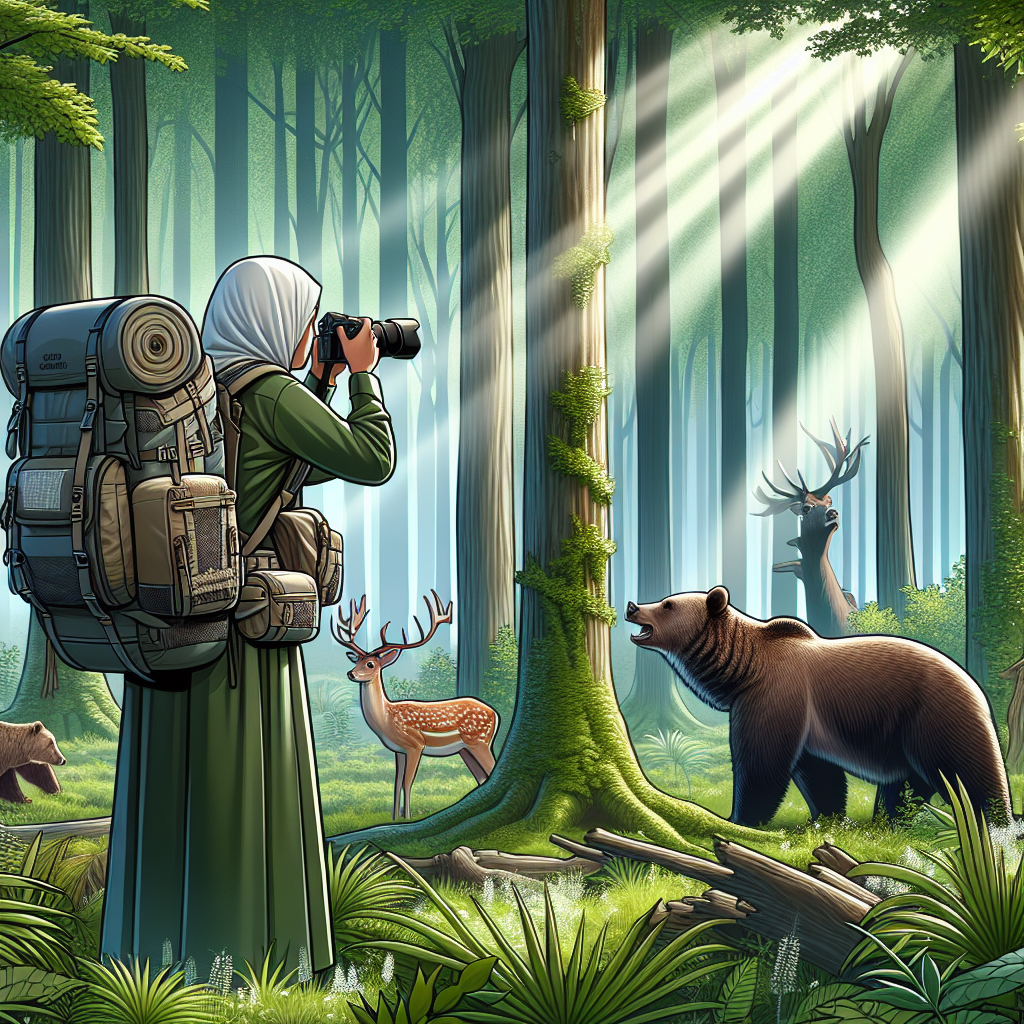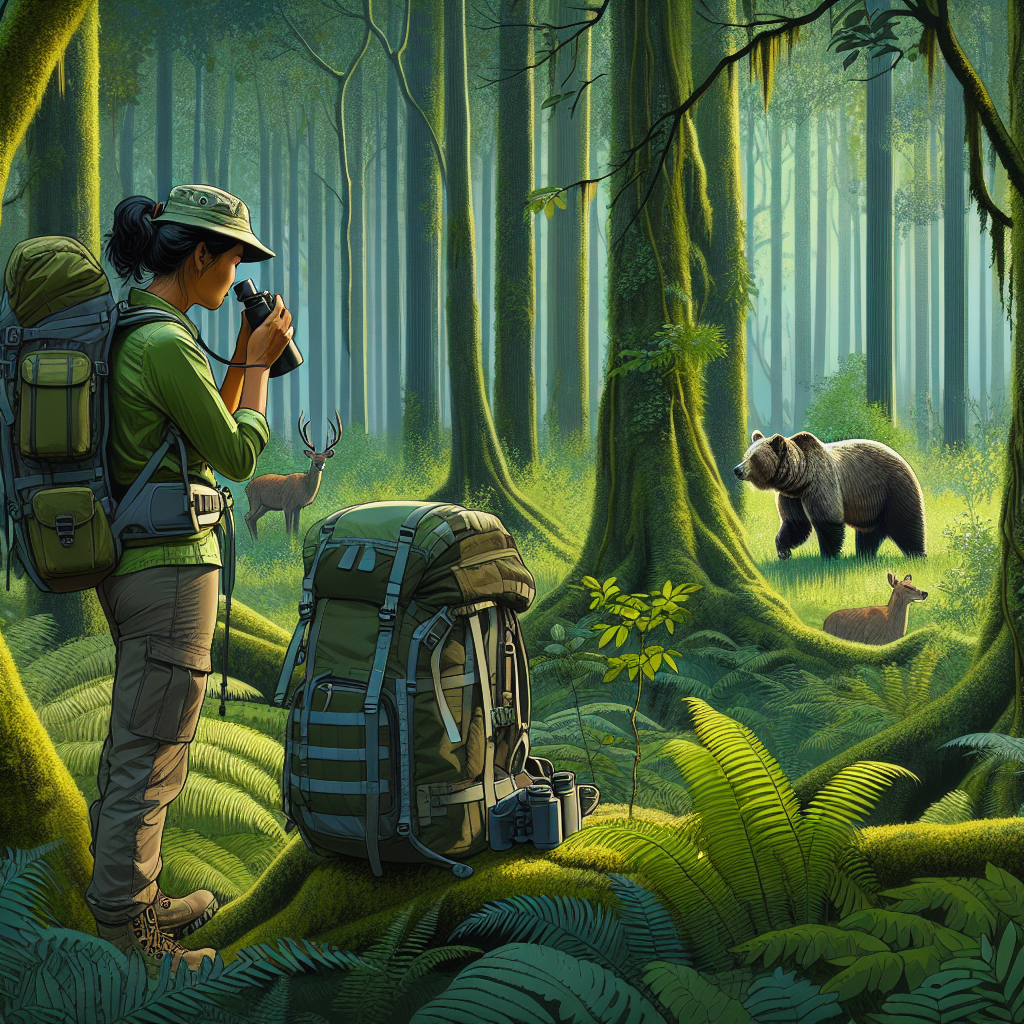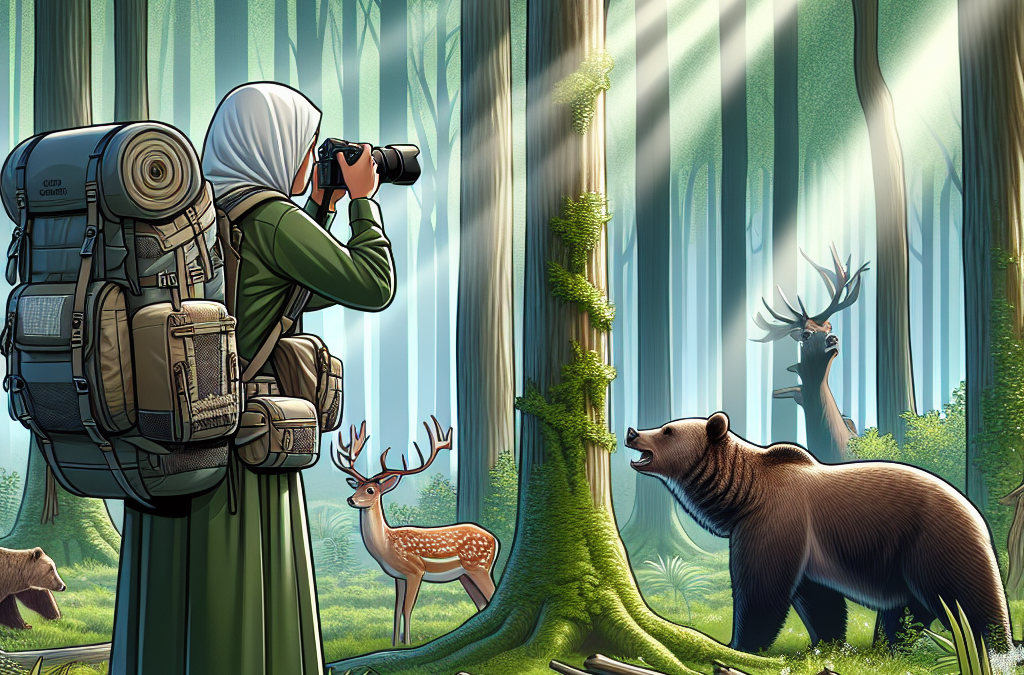For those getting ready to embark on outdoor adventures, “The Camper’s Guide to Wildlife Safety and Etiquette” is a noteworthy resource. Published by TrailTrekTribe, the eminent platform for trail lovers and adventure seekers, this guide acquaints campers with proven safety measures and proper etiquette when encountering wildlife. Drawing from deep-seated love for the wild travels of its founder, Noah Parker, and the extensive firsthand experiences of its passionate community, this guide offers practical advice that can be applied in various outdoor settings. Read on as it’s sure to equip you with a refreshing perspective of safely navigating through the wilderness while engaging responsibly and respectfully with nature.
Understanding the Encounters with Wildlife
The experience of camping and adventures magnifies when we have close encounters with wildlife. It is fascinating and thrilling but requires you to maintain ultimate respect and caution.
Common wildlife encountered during camping
You’re likely to encounter various forms of wildlife during your camping adventures. The specifics depend primarily on your location, but common examples include deer, squirrels, raccoons, foxes, birds, and, if you’re camping in more isolated areas, potentially even larger mammals like bears or cougars.
Recognizing animal signs and sounds
understanding nature’s language is the key to a fulfilling and safe outdoor adventure. It’s crucial to recognize different animal signs and sounds during your camping trip. Tracks, droppings, or particular noises can tell you what animals are nearby, helping you steer your actions accordingly.
Understanding animal behaviors
When you do encounter animals, pay close attention to their behaviors. Some animals may display aggression if threatened, while others may simply run away. Trust your gut feelings and respect all signs of discomfort shown by wild animals.
Prioritizing Safety in Wildlife Encounters
Your safety and the animals’ welfare should always be your primary concern in any wildlife encounter.
Maintaining a safe distance
No matter how docile or harmless a wild animal might seem, it’s important to maintain a safe distance at all times. Remember, you’re in their home, so always give animals plenty of space and avoid encroaching on their territory.
What to do when you spot a wild animal
Upon spotting a wild animal, stay still, and calmly assess the situation. Never corner an animal or make suddenly loud noises that could startle or threaten it. If the animal seems unaware of you, keep it that way and retreat slowly.
Appropriate behaviors during wildlife encounters
Always behave responsibly and respectfully. Remember, this isn’t a zoo; you’re stepping into the animals’ habitat. Stay quiet and composed, and avoid sudden movements that might alarm the creatures.

The Dos and Don’ts: Food and Wildlife
How you manage your food and interact with wildlife can have significant impacts on both your safety and the animals’ well-being.
Ensuring proper food storage
Improperly stored food is an open invitation for wild animals. Ensure your food is stored properly, preferably in bear-resistant containers and, whatever you do, never keep food in your tent.
Why you should not feed wild animals
While it might seem harmless or even kind, feeding wild animals can have negative repercussions. It can make them dependent on human food, disrupt their natural feeding patterns or even make them aggressive in search of more.
Handling encounters with scavenging animals
If you encounter scavenging animals, discourage them calmly without hurting them. Use deterrents like strongly scented substances, which otherwise act as repellents, to discourage scavengers from getting too close to your campsite.
Respecting Wildlife Habitats
This is their home, and as responsible guests, we should respect it.
The importance of staying on trails
The marked trails are there for a reason – they protect both the wildlife and you. Ever wondered why plants don’t grow on trails? It’s because regular treading has made the ground there infertile. Every step off the designated path can harm the delicate flora and fauna.
Avoiding disruption of natural habitats
Courtesy calls for not disturbing the residents of the places we venture to. Always leave natural features as you found them and avoid causing unnecessary disruptions to the local fauna and flora.
Plant safety and etiquette
The outdoor environment is a place of delicate balance. Here, even plants have their vital role. It’s important to respect that, so pick your campsite carefully, and don’t destroy plants unnecessarily.

Handling Physical Contact with Wildlife
Even with all precautions, there may be instances of physical contact with wildlife.
When to avoid physical contact
In general, any physical contact with wildlife should be strictly avoided. Remember, wild animals are not pets. They can be unpredictable, and your attempts to touch or handle them can stress them out.
Steps to take after accidental contact
If accidental contact occurs, immediately clean and disinfect the area to prevent infection. If a wild animal bites or scratches you, seek medical attention as soon as possible.
Handling injured or seemingly abandoned wildlife
It might be unsettling to see an injured or seemingly abandoned animal. However, it’s not advisable to intervene. Instead, reach out to local wildlife officials, who are trained and equipped to respond appropriately in such situations.
Wildlife and Pets: Ensuring Safety for Both
Bringing pets into the wilderness introduces another level of complexity.
Guidelines for camping with pets
When camping with pets, always keep an eye on them. Keep them on a leash and never leave them unattended. Pets can be curious, and their actions may inadvertently disturb wildlife or put both your pet and the wild animal at risk.
Understanding potential wildlife threats to pets
Just as pets can be a disturbance to wildlife, wildlife can pose threats to pets. Some animals may react aggressively to a perceived threat, while others could carry diseases.
Preventing wildlife and pet conflicts
To avoid conflicts, supervise your pets at all times and discourage any chasing of wildlife. Basic pet obedience training can also come in handy in the wilderness.
Nighttime Wildlife Safety
Once night falls, the rules of engagement with wildlife might slightly change.
Dealing with nocturnal animals
Most animals are active during twilight hours and nighttime. Areas that seemed clear during the day may have nocturnal creatures roaming at night. Remember to use your torchlight sparingly to avoid startling them.
Light use and its effects on wildlife
Excessive light can disrupt animals’ natural behaviors because many of them are sensitive to light changes. Use light only when necessary and opt for less disruptive red lights or low-power settings whenever possible.
Safe practices for nighttime activities
When moving around at night, make your presence known gently by making soft noises. This lets animals know of your whereabouts without getting alarmed. Finally, always check the vicinity with your lights before setting down anywhere.
Wildlife Safety in Different Terrains
Different terrains present different wildlife encounters and require different approaches.
Waterfront wildlife safety and etiquette
Waterfront areas can be home to different wildlife species compared to dry land. Take care to use established water sources and crossings, pack out all trash, and avoid disrupting local habitats.
Mountain wildlife encounter advice
Mountains are the abode of exclusive wildlife like mountain goats, sheep, or bears. If you’re camping in these heights, stay on established trails and campgrounds, keep safe distances from wildlife, and secure your food properly.
Forest wildlife considerations
A forest teems with wildlife, from small critters to bigger mammals. Following the general guidelines of maintaining a safe distance, not disturbing natural habitats, and keeping your food secured can see you through.
Sustainable Practices for Wildlife Preservation
As responsible adventurers, we have an important role to play in wildlife preservation.
Carrying out waste responsibly
Leave no trace behind isn’t just a principle – it’s a way of life we advocate strongly at TrailTrekTribe. Always pack out what you pack in and leave the campsite cleaner than you found it.
The impact of noise pollution on wildlife
Loud sounds and noises disrupt the natural rhythm of wildlife and can create unnecessary stress. Keep the noise levels low while camping and respect the tranquility of the wilderness.
The role of campers in wildlife conservation
We believe campers can play a significant role in wildlife conservation. Practice responsible camping, educate others, and support wildlife conservation programs whenever possible.
Wildlife Photography Etiquette and Guidelines
Photography is a great way to remember your adventures, but it should never come at the expense of wildlife.
The impact of photography on wildlife
Flashing lights and noises from cameras can disrupt and stress wildlife. They can also encourage undesirable behaviors or habituation if you get too close for that perfect shot.
Rules for ethical wildlife photography
Always put the well-being of your wildlife subjects first – no photo is worth endangering an animal. Maintain proper distances, avoid stressing animals, and never bait an animal to get the perfect shot.
Promoting responsible sharing of wildlife experiences
Sharing your wildlife experiences can be a powerful tool in promoting wildlife conservation. However, always ensure that your shared content encourages responsible behavior and respect for wildlife.
Remember, at TrailTrekTribe, we’re a community that revels in the beauty of the outdoors. We believe in responsible adventuring, maintaining respect for wild habitats, and preserving the natural world for generations to come. Adventure safely!

